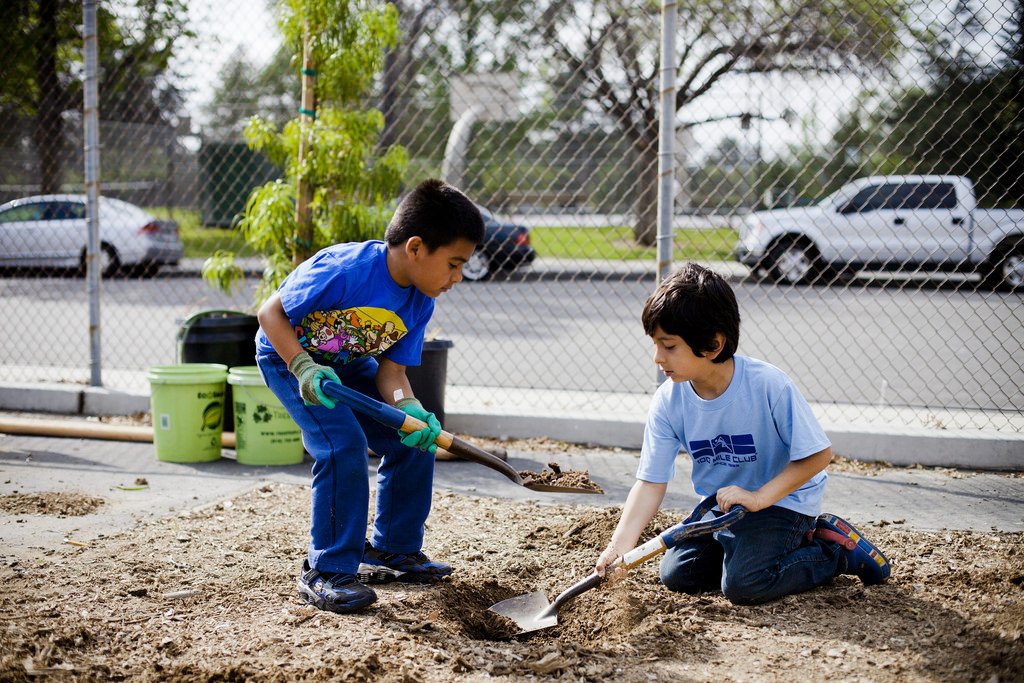Earlier this week, The Nature of Cities held an online roundtable about the importance of urban environmental education and what makes an effective educational program. Featured in the roundtable was TreePeople’s Senior Manager for Environmental Education, Candice Russell. The Nature of Cities has allowed us to repost Candice’s essay here, so read on to learn about why TreePeople encourages and promotes environmental education throughout Los Angeles.
[blockquote]
Urban environmental education is growing in scope and complexity. Summer camps, scouts, nature centers, natural history museums, and other similar programs have introduced young people to the natural world for generations. These programs have created an opportunity to learn about the environment, and for many of us have represent wonderful immersive experiences that were part of childhood, a rite-of-passage, and simply a pleasant way to spend our time. In this way, youth development through urban environmental education is not new at all.
While programs designed to expose youth to nature still exist, in the minds of many, teaching young people about the environment has evolved from an enriching experience to a necessary intervention. We know that children spend less time outside than they did in the past — by some accounts as much as 50% less than they did 20 years ago. From Nature Deficit Disorder as described in Richard Louv’s book Last Child in the Woods, to the well-documented American childhood obesity epidemic, it’s clear that our children need nature and environmental education to enrich and repair lives increasingly spent indoors.
But just as we know that kids need nature, we’re learning that in many ways nature needs them too. The need to educate students about issues of increasing environmental urgency such as climate change and the desire to grow an environmentally literate society have both escalated youth development through environmental education from wonderful opportunity to a critical emergency response.
TreePeople in fact exists because an urban kid got out of the city and into nature. Our President and Founder Andy Lipkis was a 15-year-old summer camper in the San Bernardino Mountains near Los Angeles when he was inspired to plant and care for trees, an action that later lead to him founding TreePeople as a teenager. Every time we plant a tree at TreePeople, the Citizen Foresters and volunteers gather around and together say, “Trees need people, people need trees,” as part of the naming ceremony. This is because in cities trees face many threats, from high carbon emissions to flying soccer balls, and need us to care for them until they are well established. Helping young people understand that their continued action is necessary for the survival of the trees they’ve planted is an important part of our work.
The truth is that our youth can no longer afford to have a “Giving Tree” relationship with nature. They must recognize what they have to give as well. Our youth will be called upon to solve the critical environmental issues of our time, and will bear the burden if they cannot and will not understand what’s at stake. Environmental education itself isn’t new; it is the urgency surrounding the movement to couple traditional experiential education with a deeper understanding of environmental problems and solutions that is. And it is necessary to help our students understand all that nature has to give, and all they will be asked to give in return. Trees need people, and people need trees.
[/blockquote]
Want to learn more about environmental education? You can check out the rest of the roundtable at The Nature of Cities, and you can visit our website to learn more about our environmental education programs here at TreePeople and how you or the student in your life can participate.

